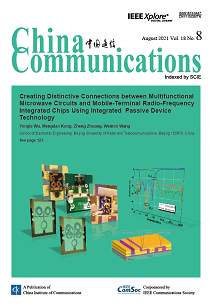Guest Editorial
Peng Yi, Tao Hu, Yanze Qu, Liang Wang, Hailong Ma, Yuxiang Hu, Julong Lan
2021, 18(8): 47-61.
Software-Defined Networking (SDN) provides flexible and global network management by decoupling control plane from data plane, and multiple controllers are deployed in the network in a logically centralized and physically distributed way. However, the existing approaches generally deploy the controllers with the same type in the network, which easily causes homogeneous controller common-mode fault. To this end, this paper proposes heterogeneous controller deployment in the SDN, considering the different types of controllers and relevant criteria (e.g., delay, control link interruption rate, and controller fault rate). Then, we introduce a Safe and Reliable Heterogeneous Controller Deployment (SRHCD) approach, consisting of two stages. Stage 1 determines the type and the number of heterogeneous controllers required for the SDN network based on the dynamic programming. Stage 2 divides the SDN network into multiple subnets by k-means algorithm and improves the genetic algorithm to optimize the heterogeneous controller deployment in these SDN subnets to ensure reliable switch-controller communications. Finally, the simulation results show that the proposed approach can effectively reduce the control plane fault rate and increase the attack difficulties. Besides, the switch- controller delay has been lowered by 16.5% averagely.
